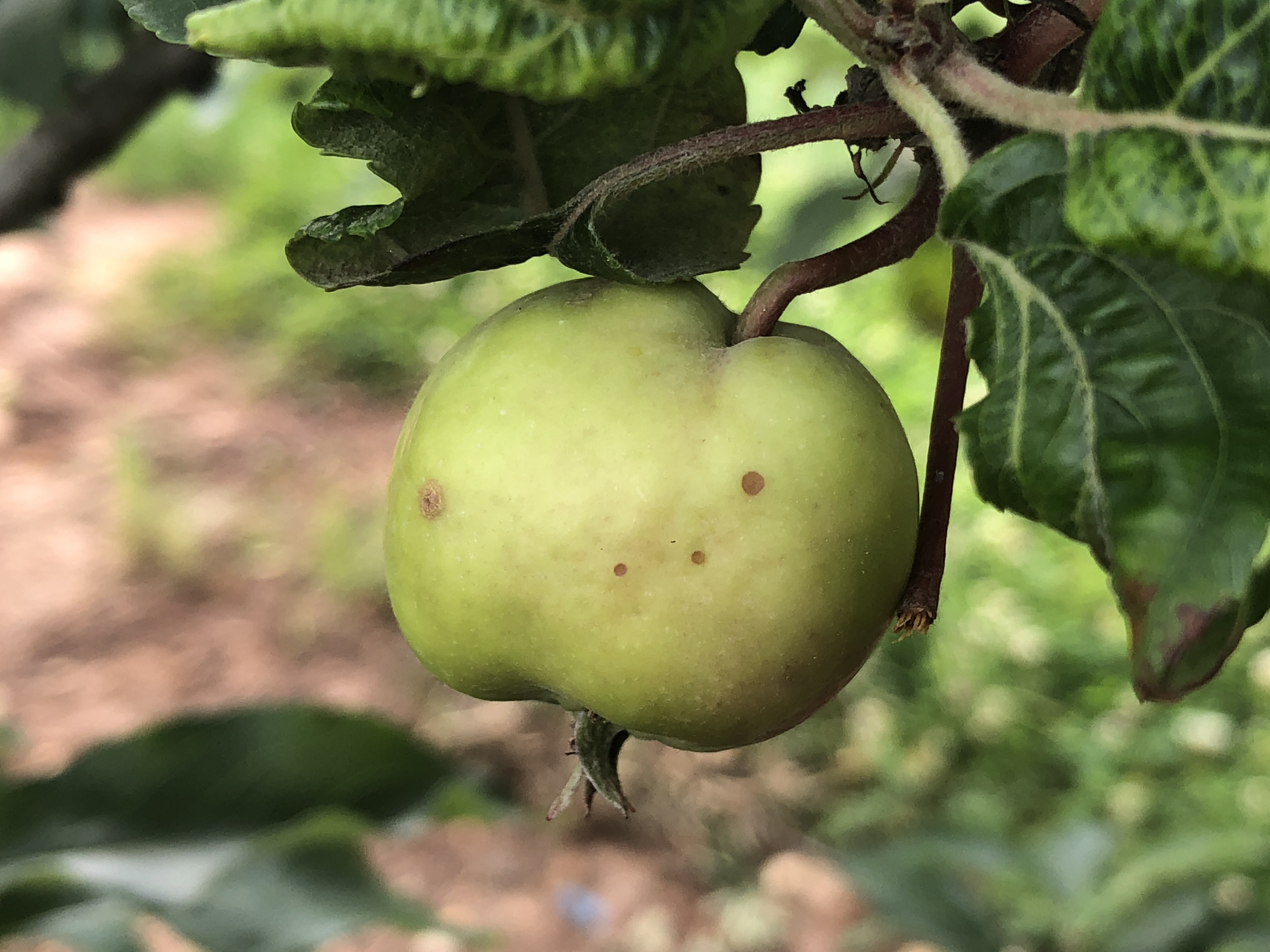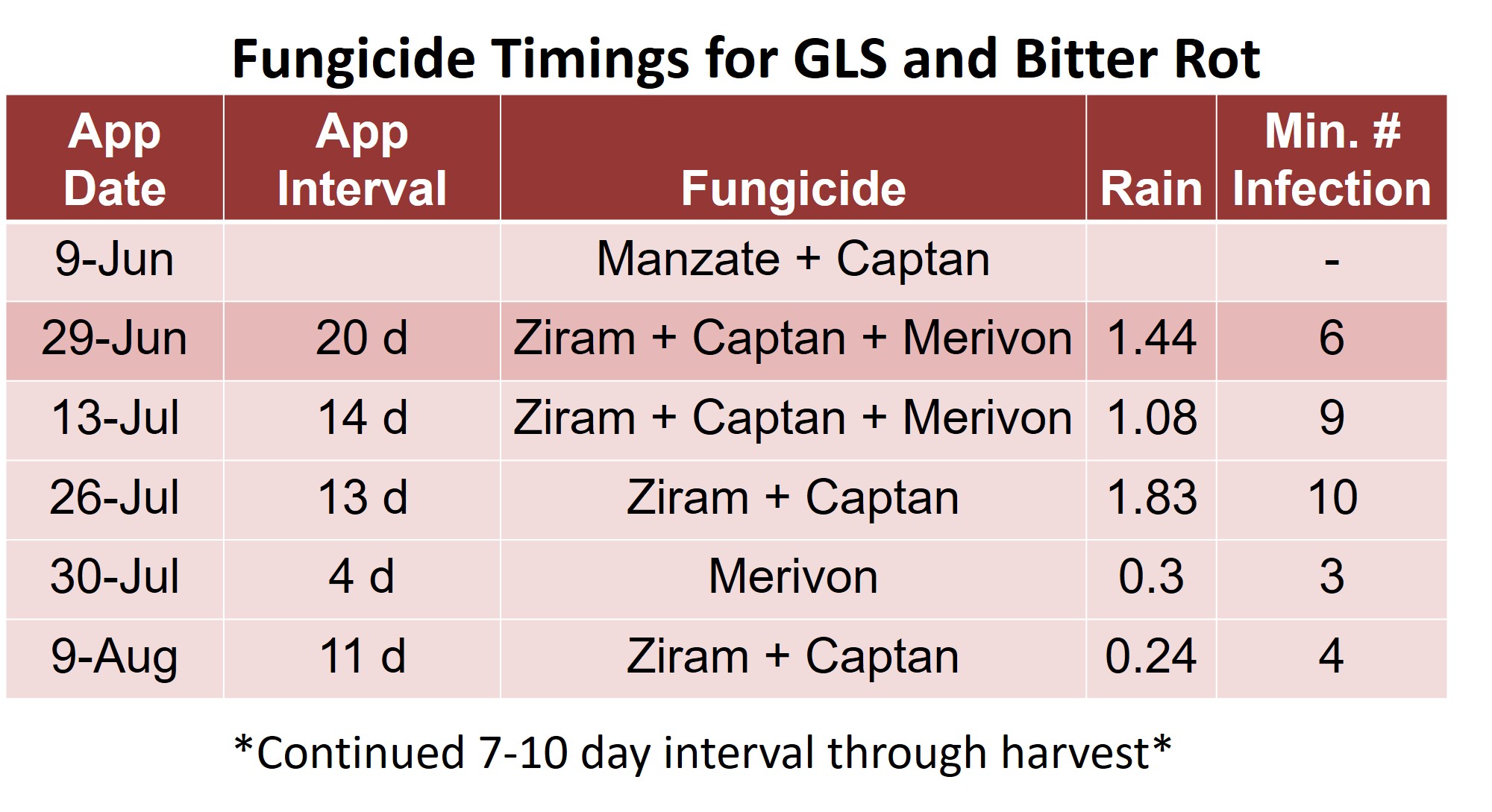Apple Disease Update: Week of June 15, 2025
go.ncsu.edu/readext?1077836
en Español / em Português
El inglés es el idioma de control de esta página. En la medida en que haya algún conflicto entre la traducción al inglés y la traducción, el inglés prevalece.
Al hacer clic en el enlace de traducción se activa un servicio de traducción gratuito para convertir la página al español. Al igual que con cualquier traducción por Internet, la conversión no es sensible al contexto y puede que no traduzca el texto en su significado original. NC State Extension no garantiza la exactitud del texto traducido. Por favor, tenga en cuenta que algunas aplicaciones y/o servicios pueden no funcionar como se espera cuando se traducen.
Português
Inglês é o idioma de controle desta página. Na medida que haja algum conflito entre o texto original em Inglês e a tradução, o Inglês prevalece.
Ao clicar no link de tradução, um serviço gratuito de tradução será ativado para converter a página para o Português. Como em qualquer tradução pela internet, a conversão não é sensivel ao contexto e pode não ocorrer a tradução para o significado orginal. O serviço de Extensão da Carolina do Norte (NC State Extension) não garante a exatidão do texto traduzido. Por favor, observe que algumas funções ou serviços podem não funcionar como esperado após a tradução.
English
English is the controlling language of this page. To the extent there is any conflict between the English text and the translation, English controls.
Clicking on the translation link activates a free translation service to convert the page to Spanish. As with any Internet translation, the conversion is not context-sensitive and may not translate the text to its original meaning. NC State Extension does not guarantee the accuracy of the translated text. Please note that some applications and/or services may not function as expected when translated.
Collapse ▲ After a rough week with the heat, rain and humidity, you may want to consider trying to get a fungicide application on ASAP if you didn’t apply anything after the Thursday rain. It looks like the rain will arrive tomorrow afternoon, so consider at least trying to get cultivars that are highly susceptible to Glomerella leaf spot and/or bitter rot and have had severe disease in the past . Tuesday looks like a better opportunity if you can wait it out. However, keep in mind that captan only has protective activity (should go on before rain/infection event) and that fungicides like Merivon, Flint Extra, Luna Sensation, and Aprovia only have limited “kick-back” activity.
After a rough week with the heat, rain and humidity, you may want to consider trying to get a fungicide application on ASAP if you didn’t apply anything after the Thursday rain. It looks like the rain will arrive tomorrow afternoon, so consider at least trying to get cultivars that are highly susceptible to Glomerella leaf spot and/or bitter rot and have had severe disease in the past . Tuesday looks like a better opportunity if you can wait it out. However, keep in mind that captan only has protective activity (should go on before rain/infection event) and that fungicides like Merivon, Flint Extra, Luna Sensation, and Aprovia only have limited “kick-back” activity.
Taking a look back at an example “real life” spray schedule from a few years back. This ‘Granny Smith’ block ended up with an unfortunate amount of GLS and bitter rot despite tighter fungicide applications in late July/early Aug:
 A few things to note here: 1) Throughout June and July, fungicides were applied on extended intervals. 2) At no time between fungicide spray intervals, was rain 2 inches or greater; however GLS and bitter rot severity was still high throughout the block. 3) Given the minimum infection requirements we discussed a few weeks ago, despite the lack of rain, there were still several infection events due to the heat and leaf wetting hours. The take homes here are:
A few things to note here: 1) Throughout June and July, fungicides were applied on extended intervals. 2) At no time between fungicide spray intervals, was rain 2 inches or greater; however GLS and bitter rot severity was still high throughout the block. 3) Given the minimum infection requirements we discussed a few weeks ago, despite the lack of rain, there were still several infection events due to the heat and leaf wetting hours. The take homes here are:
- If you have not been on 7 to 10 day fungicide application intervals, I’d recommend starting. If you lost your crop due to frost or hail, in GLS susceptible cultivars, I’d still consider going out every 14 days or so and applying captan or another multi-site fungicide. I’ve observed trees dying in my research ‘Gala’ block likely due to premature defoliation leading to winter injury and subsequent opportunistic fungal pathogen invasions (e.g. Botryosphaeria).
- Although there’s not much rain in the forecast, infection events still occur. Furthermore, we’ve seen through captan degradation studies, that most captan residues that are going to wash off do after the first rain event after application and then the rest sticks and tends to degrade over the next 14 days (ideal time to reapply is 7 to 10 days)
- If you’ve made 2 or 3 applications of a strobilurin (FRAC11), don’t waste another quite yet. You want to save one application for the immediate preharvest period and then the other when the probability of rain is high over the next 7 to 10 days.
- This week consider the following:
- Captan 2.5 to 3 lb/A alone or (+) Topsin or Omega or Aprovia. If you applied Aprovia last week or a strobilurin, I would not apply Aprovia again. Topsin has performed decently in GLS and bitter rot associated with GLS in our trials and in addition it’s still a solid choice for flyspeck/sooty blotch management. Adding ProPhyt or another phosphorous acid fungicide or OSO will also perform well against FSSB if you’re looking for an alternative mode of action.
Speaking of flyspeck/sooty blotch, next week’s post will have a more in depth look at managing this disease and some of the new options out there. If you have any questions or topics you’d like me to address, please email them to me, or enter the comments in the feedback section of this post.


